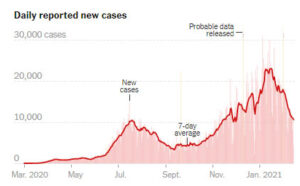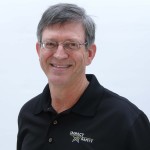Scientists say there is mounting evidence that with indoor situations, tiny aerosols emitted when we talk are playing a significant role in the spread of COVID-19. This is very important information, since the initial message and focus was to contain the emission of larger particles when people cough, sneeze, sing, or yell, in hopes that catching these larger particles would be enough to contain the virus. The initial message implied that since the large particles normally don’t travel more than 6 feet (unless a fan of some type is in use), masking may not be necessary if people are reasonably distanced.
The current message from some scientists is that when we simply talk (and of course, cough), tiny invisible aerosols are also emitted and that the aerosol floats and disperses like cigarette smoke. This means that if we don't normally mask-up in our office, then call another person in for a "masked" meeting, the guest visitor could be at risk of breathing our (potentially contagious) aerosols. It also implies that a room of cubicles likely isn't providing the protection we hoped.
Good News: Our unprecedented surge in COVID-19 cases after the holidays, has caused many to get more serious about masking and distancing, so the number of new cases is getting a little lower each day.

This chart showing TEXAS COVID-19 Cases comes from The New York Times
At this point only less than 5% of us have been vaccinated. In order to lower the spread to lower rates than we achieved in the past year, the American Industrial Hygiene Association (AIHA) suggests the following:
MASKING:
While most masks (exception – sports gators) can help contain (and potentially keep out) large wet particles from coughs. There is a huge difference in effectiveness of masks for containing (and keeping out) small aerosols. The effectiveness for aerosols might look something like this chart:
Effectiveness with Aerosols Mask Description
Very Effective N95, & perhaps some KN95 Masks (if worn with a good seal)
Good medical mask with over-mask (to seal the edges)
Moderate medical mask (rated type)
Somewhat helpful double layer cloth with nose piece, or two cloth masks
<10% effective (for aerosols) single layer cloth mask or sports gator
Note: This chart is not official, only implied in readings.
Personally, I’m sticking with multiple layer masks for everyday situations and going to the KN95 masks for situations where there may not be distancing, masking, or situations where I might end up in a crowded line.
VENTILATION:
In areas where worker density is not light, and ceilings are not high, Engineering controls can make a huge difference in protecting workers from COVID-19 exposure.
Have your HVAC company adjust your systems to provide 4.5 (or more) air turns per hour.
Make sure your HVAC systems use either HEPA filters or filters with 13-15 merc ratings.
When changing filters, personnel should wear goggles, N95/KN95 masks, and gloves.
Keep exhaust fans on in busy restrooms.
For more information on these topics, checkout these links:
Recording of Interview with aerosol expert:
https://www.abc.net.au/radio/melbourne/programs/mornings/kim-prather-covid-aerosols/13135544
AIHA report on ventilation recommendations:
https://aiha-assets.sfo2.digitaloceanspaces.com/AIHA/resources/Guidance-Documents/Reducing-the-Risk-of-COVID-19-using-Engineering-Controls-Guidance-Document.pdf
OSHA’s latest guidelines on COVID-19 protections:
https://www.osha.gov/coronavirus/safework
